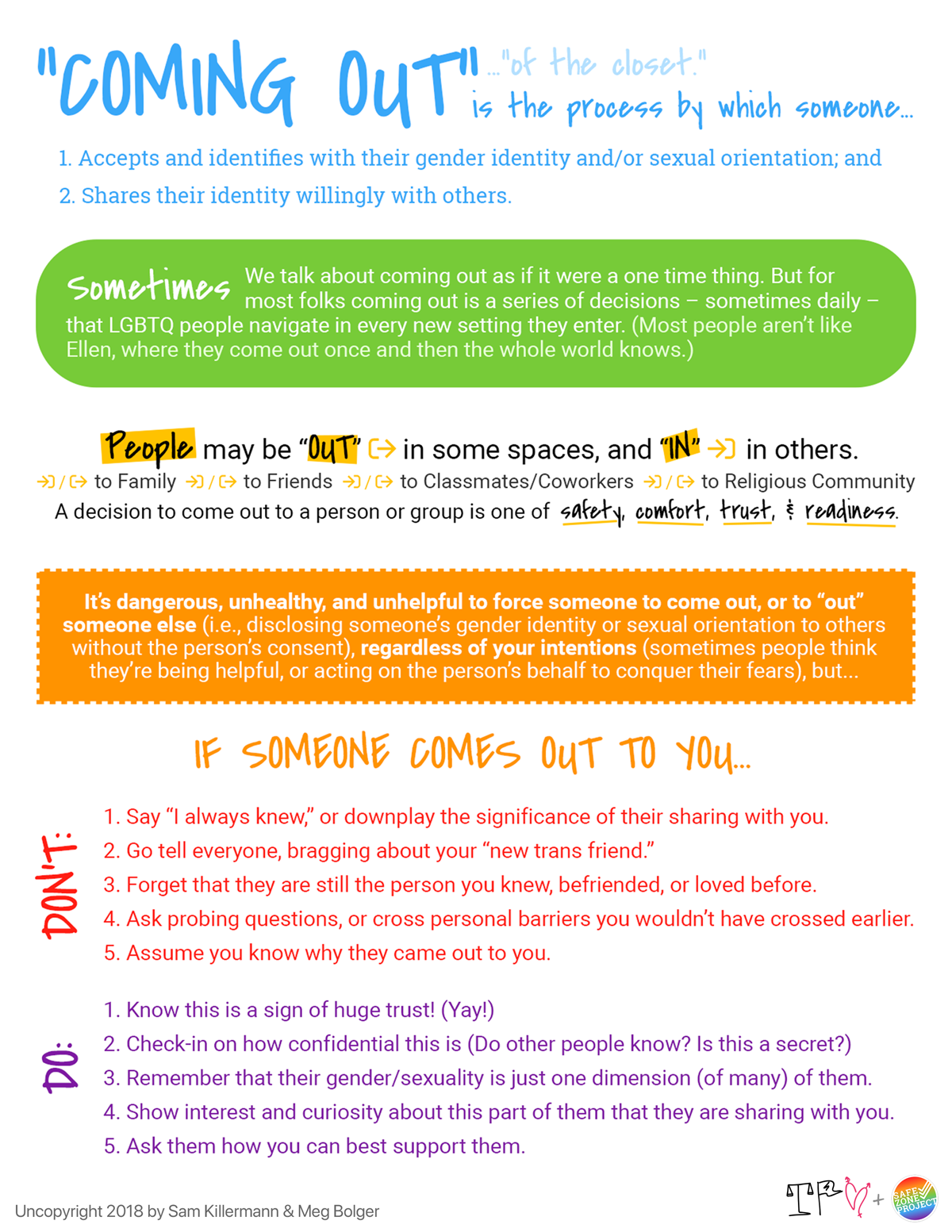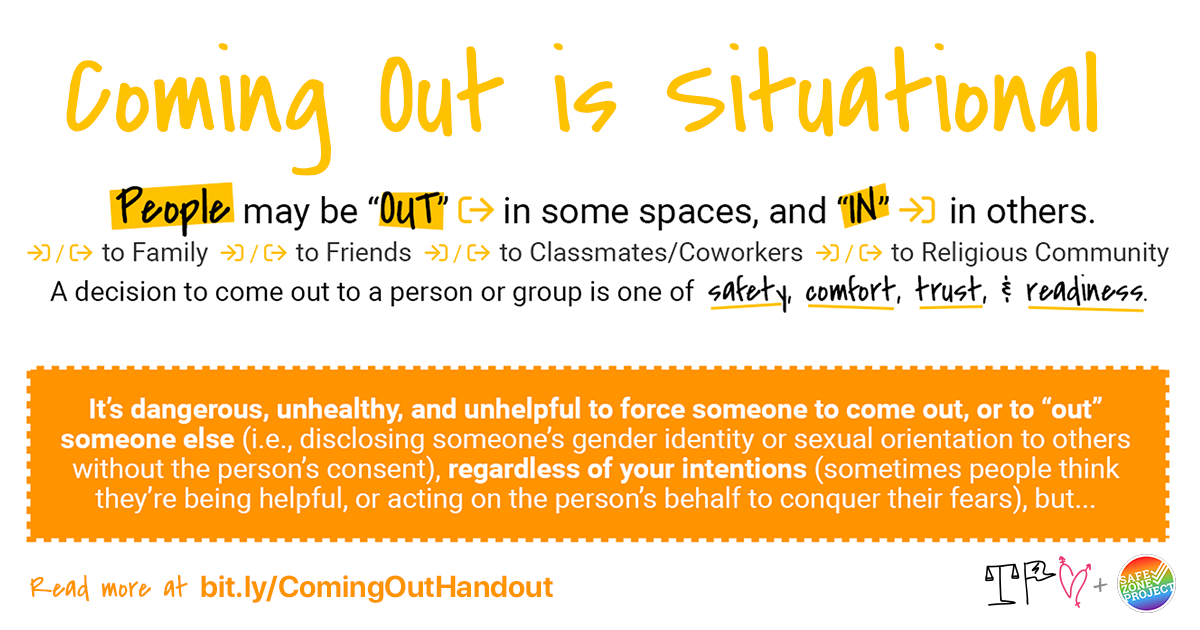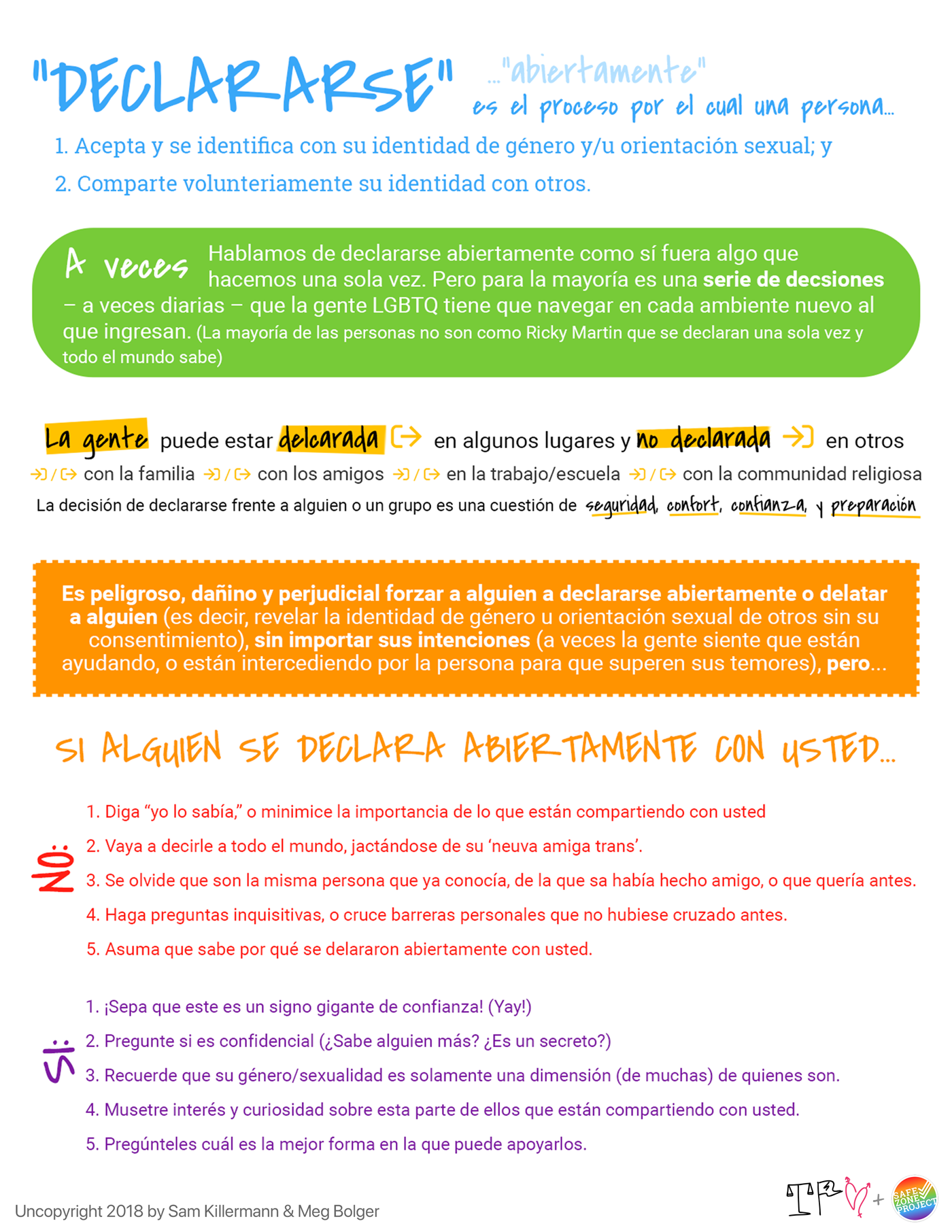In one of the first safe zone trainings I remember participating in, there was a loaded question about coming out that was followed by an excellent answer from the facilitator. The question was something like “Why don’t some people come out of the closet?”
And the facilitator’s answer elegantly touched on three different ideas: (1) that coming out is a personal decision; (2) there isn’t only one closet; and (3) it’s difficult to gauge how people might respond to the coming-out-er, so sometimes the risk of a bad response doesn’t outweigh the gain of a positive one.
“Coming out” is a multi-faceted experience and decision. The facilitator’s response took a question that was aiming for a simple answer — a question rooted in an overly (and harmfully) simplistic understanding of a complicated subject — and redirected it to address the nuance it deserved.
For everyone in the room, that response was eye-opening, in one way or another. Some people hadn’t considered the risks, the repetitive nature, or how much they were pushing their own unhelpful opinions onto others (e.g., when they told their friends to “just come out already.”). So now, all these years later, because we are still getting questions in trainings about coming out, Meg Bolger (co-creator with me at The Safe Zone Project) and I created this nifty little edugraphic.
We hope it clears up some misunderstandings, and provides clarity and nuance for folks who are unfamiliar with the nooks and crannies of coming out. Now, from the graphic…
Coming out of the closet is…
The process by which someone (1) accepts and identifies with their gender identity and/or sexual orientation; and (2) shares their identity willingly with others.
Sometimes we talk about coming out as if it were a one time thing. But for most folks coming out is a series of decisions – sometimes daily – that LGBTQ people navigate in every new setting they enter. (Most people aren’t like Ellen, where they come out once and then the whole world knows.)
Being “Out” Is a Situation-by-Situation Decision
People may be “out” in some spaces, and “in” in others. They may be out (or not) to their family, their friends, their classmates/coworkers, or their religious community (just to name a few). A decision to com out to a person or group is one of safety, comfort, trust, and readiness.
I can still remember the first time I realized that coming out was going to be something that I would have to actively negotiate on an on-going basis my whole life. There aren’t a lot of sentence I feel safe saying “my whole life” in at this point, but this is one of them. It’s important for folks to know that this is something that is very much a part of my (and other LGBTQ+ folks) everyday experience and knowing ways to be understanding, supportive, and affirming of someone — especially at the beginning of their coming out journey — is incredibly important.
– Meg Bolger, The Safe Zone Project
DOs and DON’Ts when Someone Comes Out to You
A few helpful tips:
DON’T:
- Say “I always knew,” or downplay the significance of their sharing with you.
- Go tell everyone, bragging about your “new trans friend.”
- Forget that they are still the person you knew, befriended, or loved before.
- Ask probing questions, or cross personal barriers you wouldn’t have crossed earlier.
- Assume you know why they came out to you.
DO:
- Know this is a sign of huge trust! (Yay!)
- Check-in on how confidential this is (Do other people know? Is this a secret?)
- Remember that their gender/sexuality is just one dimension (of many) of who they are.
- Show interest and curiosity about this part of them that they are sharing with you.
- Ask them how you can best support them.
Social-media-friendly images for people who want to inform a friend:
Maybe you want to share just one part of this edugraphic with a friend, or in a community, where you know the message will help. Feel free to do so! These images, along with the edugraphic itself, are all uncopyrighted.
(Click each image to view it on Facebook, or just right click to “Save As” and do whatcha want.)
Coming Out Definition
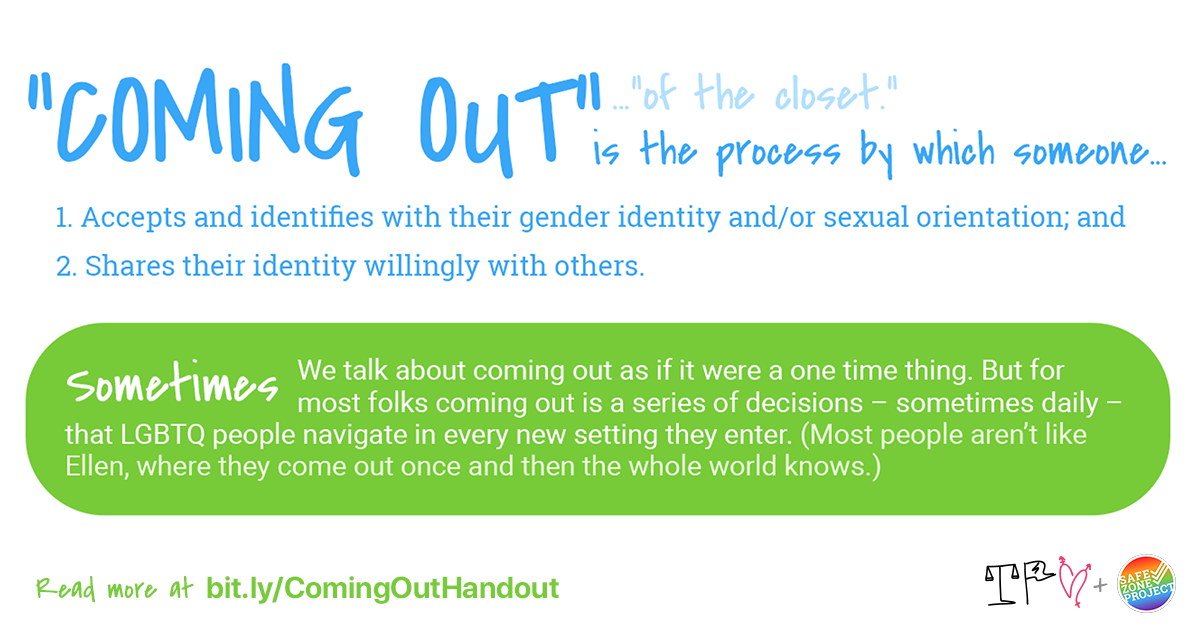
Coming Out is Situational![]()
Coming Out DOs and DON’Ts
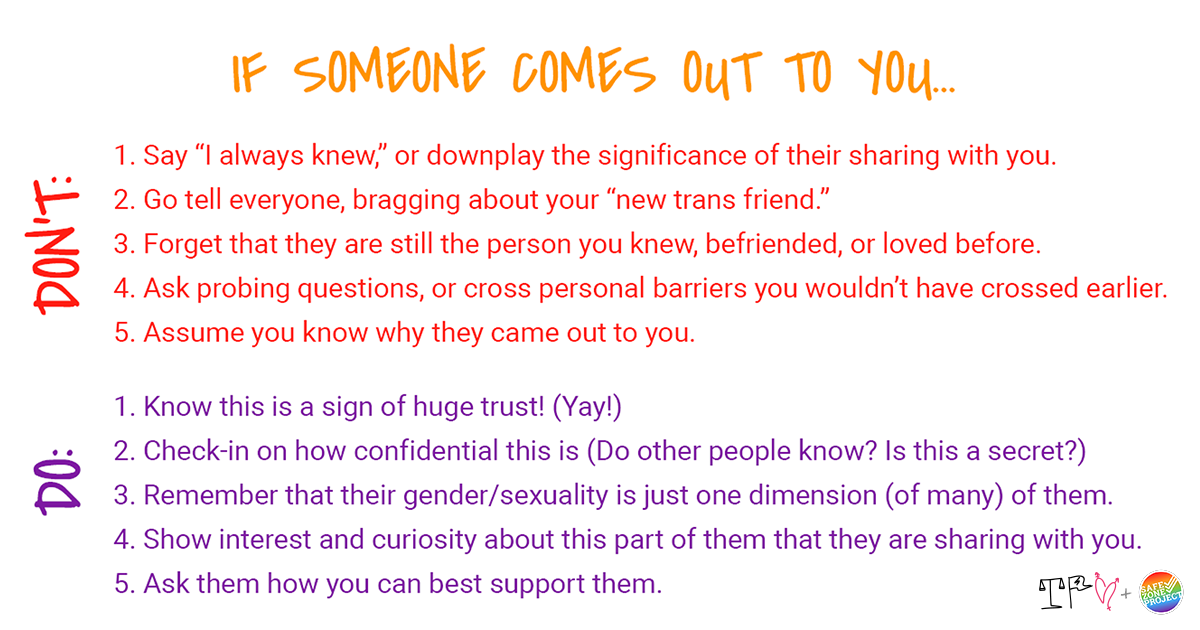
En Español
“Declararse abiertamente” es el proceso por el cual una persona…
- Acepta y se identifica con su identidad de género y/u orientación sexual; y
- Comparte volunteriamente su identidad con otros.
A veces hablamos de declararse abiertamente como sí fuera algo que hacemos una sola vez. Pero para la mayoría es una serie de decsiones – a veces diarias – que la gente LGBTQ tiene que navegar en cada ambiente nuevo al que ingresan. (La mayoría de las personas no son como Ricky Martin que se declaran una sola vez y todo el mundo sabe).
La gente puede estar delcarada sign-out en algunos lugares y no declarada sign-in en otros… con la familia, con los amigos, en la trabajo/escuela, con la communidad religiosa… La decisión de declararse frente a alguien o un grupo es una cuestión de seguridad, confort, confianza, y preparación.
Es peligroso, dañino y perjudicial forzar a alguien a declararse abiertamente o delatar a alguien (es decir, revelar la identidad de género u orientación sexual de otros sin su consentimiento), sin importar sus intenciones (a veces la gente siente que están ayudando, o están intercediendo por la persona para que superen sus temores), pero…
Si alguien se declara abiertamente con usted…
NO:
- Diga “yo lo sabía,” o minimice la importancia de lo que están compartiendo con usted
- Vaya a decirle a todo el mundo, jactándose de su ‘neuva amiga trans’.
- Se olvide que son la misma persona que ya conocía, de la que sa había hecho amigo, o que quería antes.
- Haga preguntas inquisitivas, o cruce barreras personales que no hubiese cruzado antes.
- Asuma que sabe por qué se delararon abiertamente con usted.
SI:
- ¡Sepa que este es un signo gigante de confianza! (Yay!)
- Pregunte si es confidencial (¿Sabe alguien más? ¿Es un secreto?)
- Recuerde que su género/sexualidad es solamente una dimensión (de muchas) de quienes son.
- Musetre interés y curiosidad sobre esta parte de ellos que están compartiendo con usted.
- Pregúnteles cuál es la mejor forma en la que puede apoyarlos.

